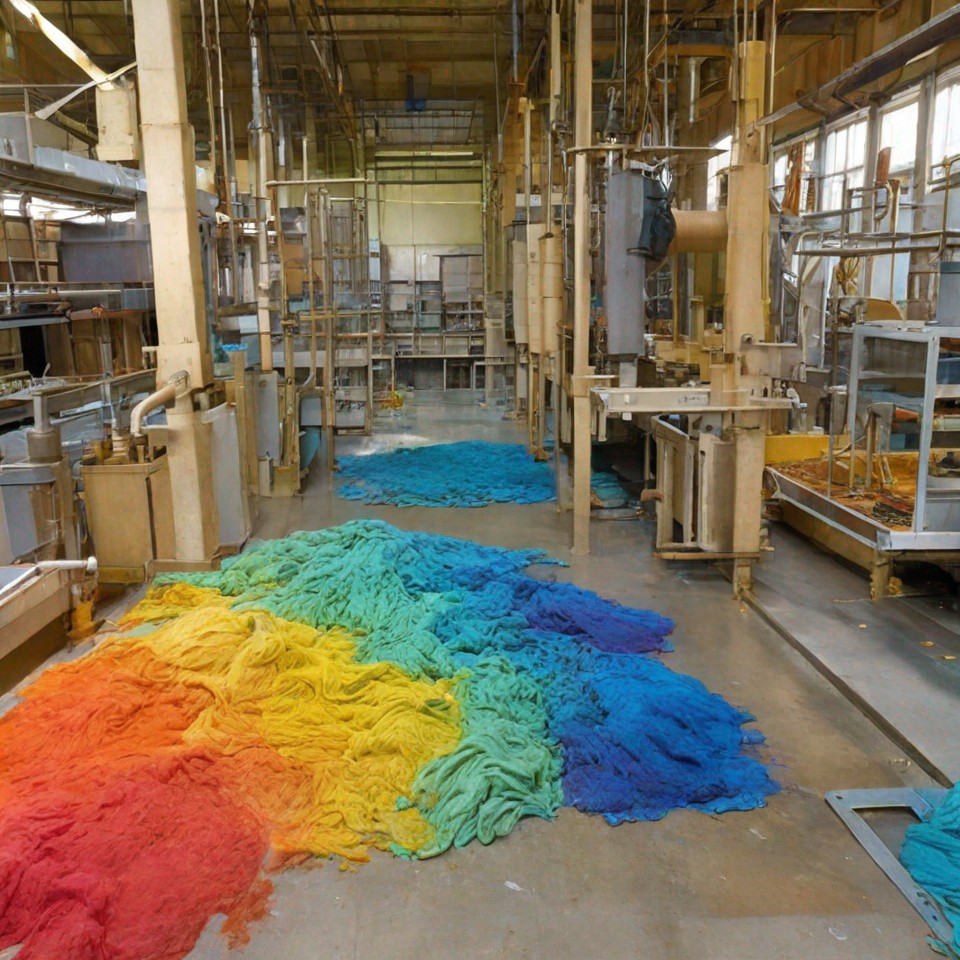I’ll never forget a visit I made many years ago to a full scale temple model with my wife. The woman running the guided tour was just chuck full of… interesting tidbits… you thought I was going to write nuts didn’t you… well shame on you. Actually she was nuts, but Lord lover her, she sure meant well.
She told us how the gold on one piece of furniture represented divine kingship, but that the gold on another piece represented holiness, and yet another meant divine blessing. The purple stuff meant royalty, the red stuff meant the shed blood of Christ’s sacrifice, white was purity, sinlessness, or forgiveness (randomly), and the blue spoke of Jesus’ heavenly origins in one place and his duel nature in another. Every announcement was delivered the same way, (conjure a staccato nasal twang as from a circus ring-master) “The reason God had the Israelites do X was because….” [make sure to hit the accent and hold the note on cause]. After a few minutes of this, my wife leaned over and (my wife is making me say )”whispered discretely” in imitation of the woman, “The reason I started this tour 30 minutes late is because no man knoweth the day nor the hour.”
One of the problems with most of what gets kicked around in terms of “typology” in biblical colors is that we hardly imagine that people from other cultures could experience colors differently than we do, and, thus, find different associations for color than we do.
In the biblical world, however, colors were few, and their interest was more about brightness and darkness than with a particular hue.[1] Indeed, their great attraction to bright colors, with little sense of “fitness” or precise color distinction, survives even to this day.[2]
Another problem is our failure to realize that our favorite temple “color” terms are actually, at least in the biblical context,[3] dye terms,[4] or dyed wool terms, that overlap in hue[5] and all share a common imagery: blood, sacrifice, and divine presence and protection. [6] Amazingly enough, the makers of the Gladiator movie nailed it in the scene where the hero and a fellow fighter walk beneath draping cloths soaked in red dye. The big man says, “The gods favor you. Red is the gods’ color.”
There are three main dyes, or dyed wool fabrics, associated with the temple and the rituals of Israel, that, while overlapping a good deal in actual color schemes, are constantly translated as distinct colors:
- תוֹלַ֥עַת שָׁנִ֖י tolaat shanee—Scarlet—a dye drawn from worms[7]
- אַרְגָּמָ֛ן argaman—purple—a dye drawn from one kind of murex snail [8]
- תְכֵ֧לֶת tekelet—violet or blue—a dye drawn from another kind of murex snail[9]
In the pagan world, these dyes were bound up with magic, fertility, power, and protection from demons. Born writes, “He who goes in purple, wins power over men and spirits.”[10] Of all the available sources of red/purple, these dyed materials are of a particular interest for both kings and priests because they are colorfast, very attractive, and extremely expensive,[11] thus quite exclusive. These were often reserved for royal and religious purposes, specifically because they were the garments of the gods, making the wearing of them an essentially religious act. [12]
There is much to be said about each occurrence of these terms, particularly in their use in temple and ritual imagery, like the use of תכלת tekelet for the single woolen cord in the Hebrew male’s tassels, but we should be wary to assume too much about these terms based on our own innate cultural responses to the English words used to translate them. We need to strive to understand what these dyes and dyed materials meant to those who used them in their service to YHWH.
[1] G. W. Thatcher, “Colours,” DB 1:456.
[2] James A. Patch, “color,” ISBE 1:729-732.
[3] In modern Hebrew, תכלת tekelet is a color. It is sky blue, or light blue. ” תכלת,” The Modern Hebrew-English Dictionary, 289.
[4] Something that matched the color of a תכלת tekelet garment would not be called תכלת tekelet
[5] Some suggest that while each dye may have had general distinctions, each dye had the potential to create varied, and overlapping colors. These dyed materials were often mixed in the making of the tabernacle and priestly garments—Ex 26:1, 27:16, 28:5, etc.
[6] Pliny 9.62.135; Jensen, “Royal Purple of Tyre,” 114; Wolfgang Born, “Purple in Classic Antiquity,” Ciba Review 4 (1937): 115.
[7] Robert Alden, “ynv” NIDOT 4:193
[8] Irving I. Ziderman, “Seashells and Ancient Purple Dyeing.” Biblical Archaeologist, (June 1990): 98-101.
[9] Irving I. Ziderman, “First Identification of Authentic Tekelet.” Bulletin of the American Schools of Oriental Research. 265 (1987): 25-33.
[10] Born, “Purple in Classical Antiquity,” 115.
[11] Recent experiments have found that only 0.1 mg of dye can be gained from a single snail, and that it takes 12,000 snails to extract 1.5 ounces of dye, which according to David Reese is just enough to dye the trim around a single garment. David Reese, “Palaikasto Shells and Bronze Age Purple-Dye Production in the Mediterranean Basin,” 203-204; This wool was worth its weight in gold during the time of Diocletian. Robert R. Stielglityz, “Commodity Prices at Ugarit,” 46 Diocletian’s Edict on Maximum Prices, 24.
[12] Nero outlawed these materials to anyone outside the royal and religious community. Jenson, “Royal Purple of Tyre,” 113, quoting Suetonious, The Twelve Caesars vi. 32.
[13] The Media pic is from sxc.hu
Discover more from Biblical Literacy with Dr. Andrew D. Sargent
Subscribe to get the latest posts sent to your email.


